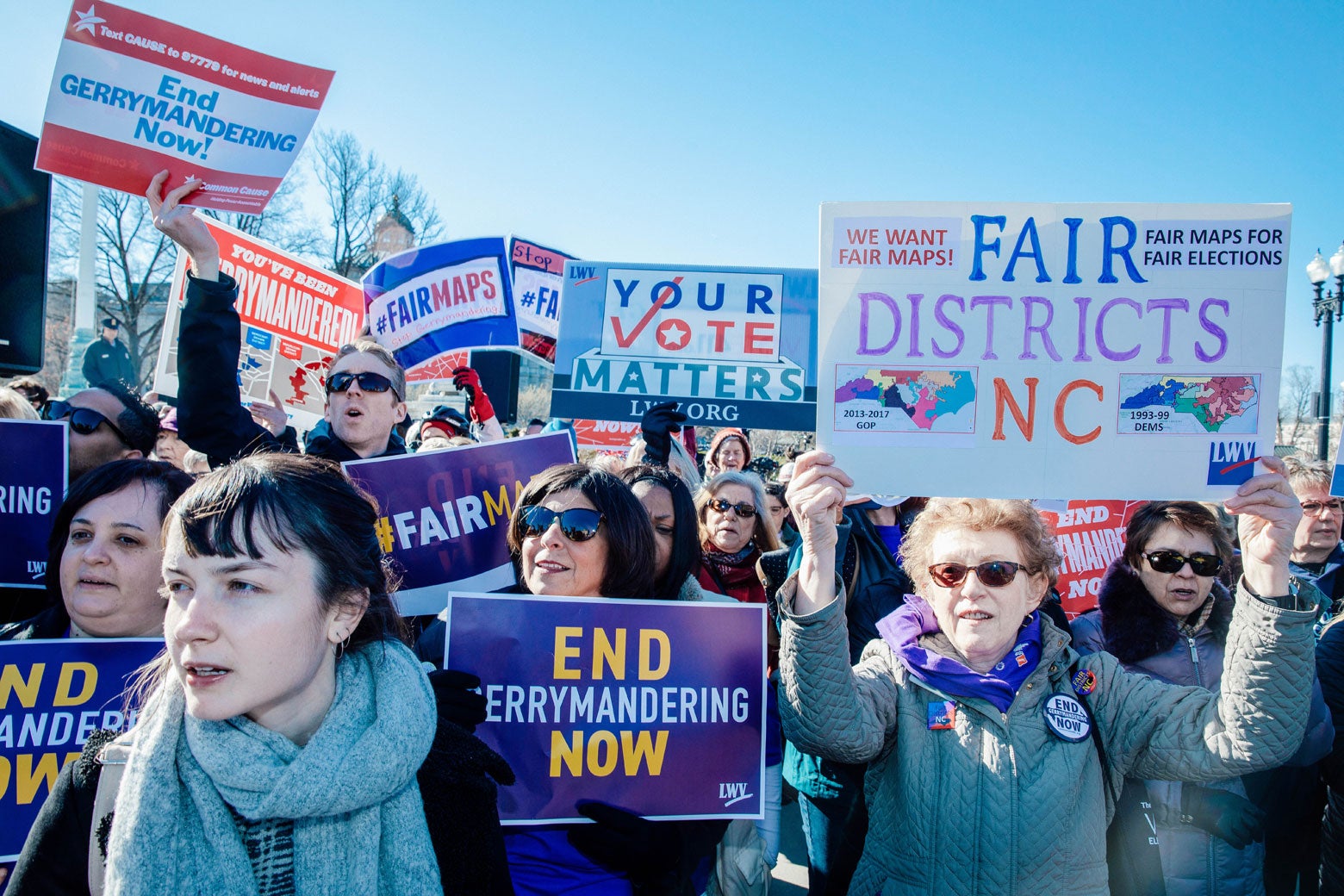For more than three decades, the Supreme Court has flirted with the idea of regulating partisan gerrymandering, and the justices once again wrestled with the issue this week. While these cases may finally place limits on partisan redistricting, some of the justices’ questions at oral arguments indicated their belief that states may offer a better remedy. A state-level route is not a substitute for the national breadth of federal reform. But it is promising because it does not depend on the tilt of a Supreme Court that is increasingly skeptical of voting rights claims.
Through their own laws and constitutions, states are free to offer far stronger protections to their citizens. In America’s federal system, the U.S. Constitution acts as a minimum guarantee of rights. And because individual states’ supreme courts are the final arbiters of their own constitutions, lawsuits based on state constitutional clauses can avoid being reviewed by the U.S. Supreme Court. Sam Wang, Rick Ober, and I have authored a law review article that describes this strategy in more detail.
Reformers can pursue state-based challenges to partisan gerrymanders using two different types of state constitutional guarantees: protections of free speech and equal protection, or provisions with no federal analogues. Like the U.S. Constitution, all 50 state constitutions protect the freedom of speech and association, and 24 guarantee the equal protection of the laws. (Many states simply mirror the federal language in their own constitutions.)
For these analogous clauses, the key distinction is whether the state’s supreme court has interpreted the protections to have the same scope as their federal analogues (known as lockstep). If a state supreme court operates in lockstep, then its interpretation of the state constitution cannot go farther than the interpretation the U.S. Supreme Court gives to the analogous federal provision. That renders state courts incapable of offering greater guarantees than those the justices may decide to implement this year. But if states give their clauses independent meaning, they can adopt much more expansive protections than those the justices see in the federal Constitution. To give one example, the Alaska Supreme Court has interpreted its equal protection clause “along lines which resemble but do not precisely parallel the interpretation” given to the federal clause.
State judges are most free to act when there is no corresponding federal constitutional provision. The most obvious examples are known as “Free and Fair Elections” or “Pure Elections” clauses. Found in 30 state constitutions, these prohibit the use of biased or unfair election procedures. Because gerrymandering manipulates election district boundaries to advantage one party over another, the argument goes, partisan gerrymandering impermissibly rigs elections by predetermining their outcomes. The Pennsylvania Supreme Court accepted this argument in early 2018, striking down the state’s congressional gerrymander as a violation of the Commonwealth’s Free and Equal Elections Clause.
But what options are available to litigants in the 20 states that don’t have free and equal/pure elections clauses? Every state has its own unique combination of constitutional and statutory provisions that could be used to challenge a districting plan. These include guarantees of procedural and substantive due process, prohibitions on laws that favor or disfavor specific individuals, and traditional redistricting requirements such as compactness, contiguity (having districts without holes), preserving political subdivisions (keeping counties together in a district, for example), and protecting communities with shared legislative interests. Additionally, unlike the U.S. Constitution, virtually every state constitution explicitly guarantees to citizens the right to vote. These could also prohibit the practice because partisan gerrymandering artificially dilutes the votes of some and enhances the votes of others.
Before bringing lawsuits, reformers should carefully consider whether they are good candidates for a state constitutional lawsuit. Many state courts are deferential to their legislatures, and some win their positions in partisan elections, potentially making them unwilling to rule in a manner that might anger voters. Bringing a lawsuit to the wrong court could establish a bad precedent, setting back the state constitutional route to reform by years or decades.
Three kinds of state courts may be willing to use their own constitutions to police gerrymanders: courts that are philosophically inclined toward expansive views of voting rights; courts in which the majority of the justices are of the opposite political party than the legislature; and courts with a history of policing redistricting. Reformers can work to elect or support the appointment of judges who will move courts in this direction. For example, Wisconsinites will have an opportunity in April to replace the longtime leader of the state Supreme Court’s liberal wing in a special election. A conservative win would make it much harder to halt future gerrymanders in that court. But if liberals hold this seat, they could flip the court in another election next year.
No matter how the U.S. Supreme Court rules in this year’s partisan gerrymandering cases, some states are ready to move ahead. Last November, a new lawsuit was filed in North Carolina state court, challenging its legislative maps under the state’s Free Elections Clause. If successful, it will be the latest victory in the fight against gerrymandering.
